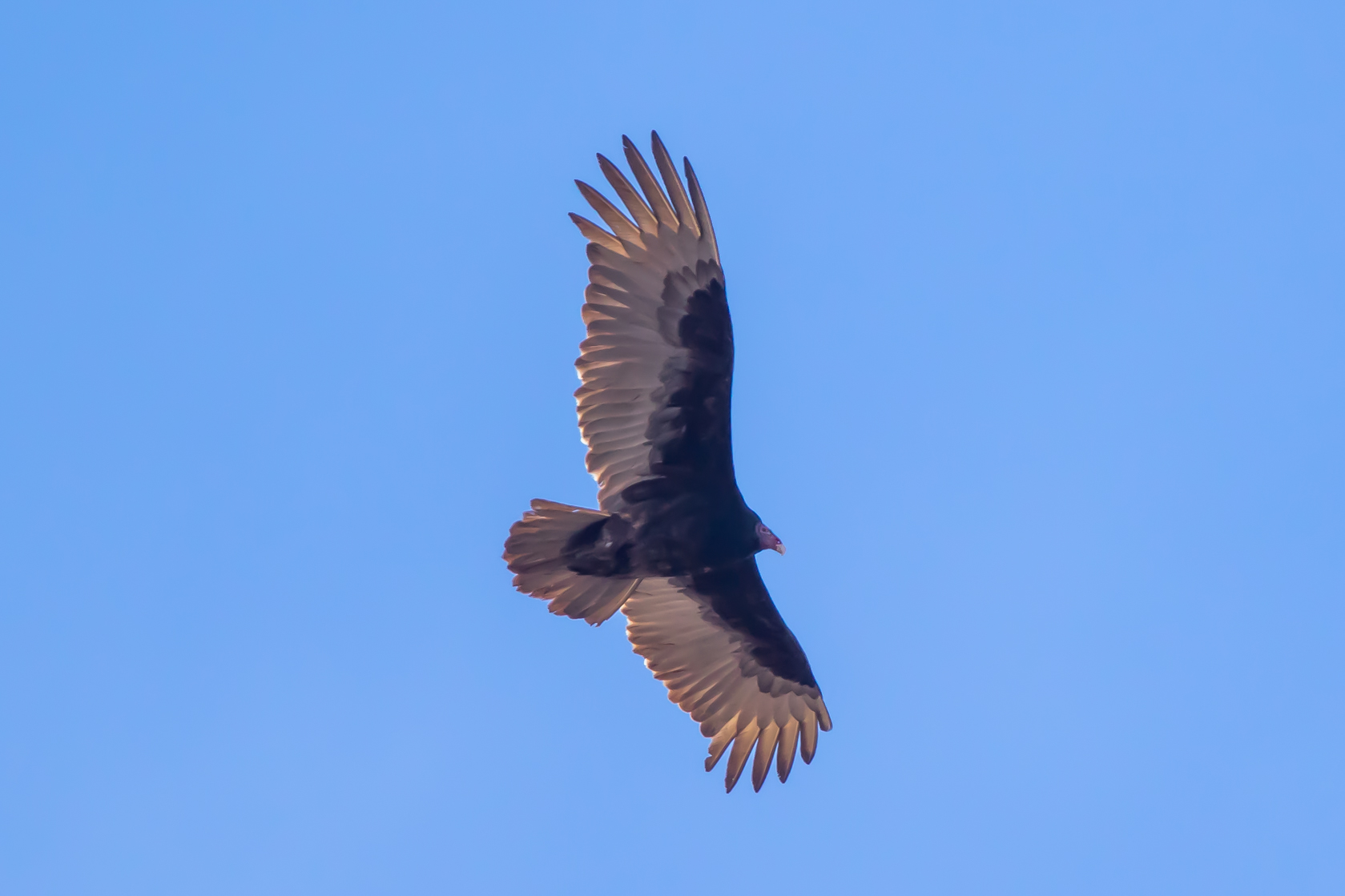One day recently we were driving along a gravel road near Owl Acres when a wild turkey flew out of the ditch and hit the car, breaking off the mirror and killing the bird. Almost before the dead turkey hit the ground, a big dark bird with a naked red head plummeted from the sky, prepared to do its work to keep the world clean and tidy.
I tend to call these birds turkey buzzards, but actually, they aren’t buzzards, they’re vultures. We call them buzzards because our immigrant ancestors saw them and were reminded of large birds in their native Europe. The large European birds are actually members of the hawk family and are rightly called buzzards. Here on Owl Acres, we call hawks hawks, not buzzards, but we tend to call vultures buzzards instead. Around here, the term buzzard evokes a certain ethos that lends itself to naming such places as restaurants and bars like Buzzard Billy’s, Buzzard Bar and Grill, Buzzard Box Catering, Buzzard Point, and more.
At any rate, you’ve undoubtedly seen them soaring on a summer breeze with their wings bent in a V shape, waiting for their next clean-up job.
Turkey vultures (Cathartes aura) are large birds, with a wingspan of around six feet and a head to tail length of two to three feet. They have a long, rounded tail and dark brown feathers that cover everything except their small, wrinkly-looking red heads. Because they don’t have any feathers on their heads, these carrion-eaters can keep their heads clean after they’ve been dumpster diving on a carcass. They don’t hunt live prey, so their legs and feet don’t have the power of raptors like eagles and hawks. Those legs and feet end up in some pretty grungy places, though, so the birds urinate on them to discourage pests.
Most birds don’t have a well-developed sense of smell. Vultures do however. Combined with their keen eyesight, they are expert at locating fresh carrion like our poor turkey almost instantaneously from their lofty position soaring above the landscape.
When they soar, turkey vultures rock side to side instead of flapping their wings. This allows them to conserve energy and take advantage of updrafts to stay aloft for long periods of time.
Turkey vultures are native to the Americas and range from Canada into Central America. The northern-most populations migrate south, but the rest patrol their territory year-round. Turkey vultures have a particular dance to attract mates, and once they select, they will stay together for many years or for life. The vultures breed once a year from March to June, raising only one or two offspring per year. They aren’t very particular about making their nests soft and cushy like many songbirds do. The vultures lay their eggs on the floor of the nest site without much fanfare. The nest sites are carefully chosen, however, for protection and safety, and often are in hollow trees, crevices in rocks and cliffs, dense thickets or old buildings. Egg incubation takes up to 40 days, and the parents both incubate the eggs and feed the nestlings for up to twelve weeks before they learn to fly.
Turkey vultures definitely are not songbirds. They sound exactly the way I imagine a dinosaur would sound. They hiss and growl. Check out the examples on this page from the Audubon Society’s field guide. Since birds are believed to be descendants of dinosaurs, it makes some kind of sense that they’d sound that way, don’t you think?
Photo from Wikimedia.org by Ron Knight Alt text: Hard to choose between gruesome roadside dining or sublime, soaring magnificence. But, here’s the magnificence. Large bird with small red head, black body and arms, and broad-spread wings with white trailing edges, soars in a blue sky. Sunlight edges its wings in gold. Turkey Vulture.

1 comment